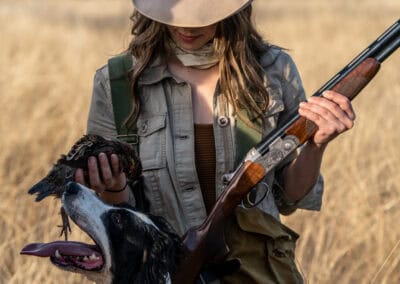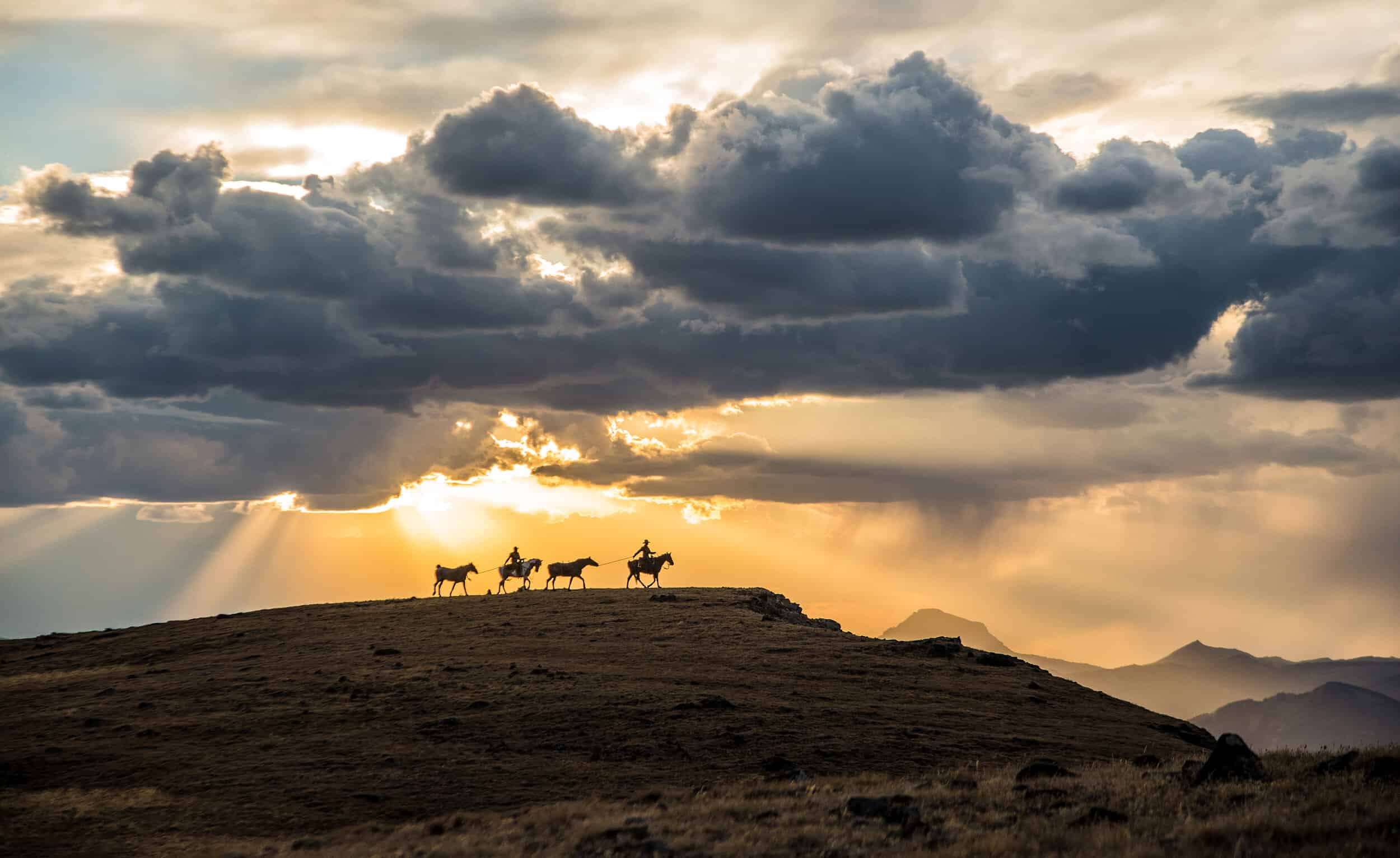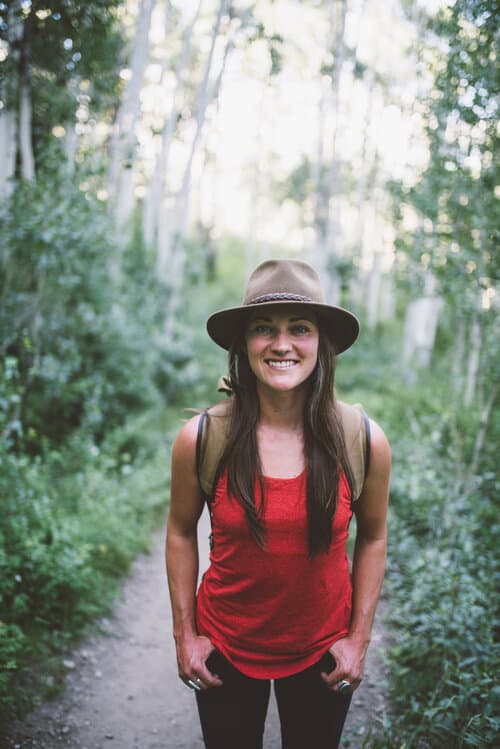Your cart is empty


Great things could lie ahead for American hunters. As new priorities give rise to the public’s engagement with nature, Lindsey Davis explores the shifting opportunities and threats to the modern hunter’s landscape.
Public lands and waters are essential to every hunter, angler, and outdoor enthusiast. They are the backbone of the outdoor industry, core to the identity of the West, and arguably our nation’s greatest heritage. In the last few years they’ve gained widespread recognition, become hashtags, t-shirts, taglines, and been the center of contentious debates, political platforms, and business negotiations. While they are undoubtedly something that makes our country unique, they are easily taken for granted, have a fraught history, complicated management structure, and a confusing financial profile. With the recent passing of the Great American Outdoors Act, billions of dollars flowing into management over the next five years alongside increased national attention, but what does that mean for the long-term health and viability of our hunting and recreation infrastructure? Here is your primer on what every public lands enthusiast should know about human history, who is paying for what, and how these lands become available to us.
While some see public lands as the great unifier, allowing every American to collectively own 640 million acres of land for a diversity of enjoyable purposes, every acre was once the inhabited territory of indigenous people. For some, these phrases and taglines about public ownership evoke a painful history of colonialism and loss. When considering our access, it is important to take this into consideration.
There are four federal agencies that are in charge of managing public land assets: The Bureau of Land Management (BLM), U.S. Forest Service (USFS), U.S. Fish and Wildlife Service (USFS), and the National Park Service (NPS). Within these agencies, there are dozens of different designations including national monuments, wilderness areas, wild and scenic rivers, and state and city parks. These lands are primarily funded by appropriations by the federal government and excise taxes and fees, which are funds levied off of the sale of specific goods. Appropriations is the process by which Congress allocates money to different government programs. Public lands have recently accounted for 2.6% or less of the government’s discretionary spending (far less than what is needed by land management agencies), leading to a cumulative effect of deferred maintenance on public lands, expressed in dilapidated buildings, closed campgrounds, a lack of fire mitigation resources, unmaintained trails, etc. Taking care of the deferred maintenance on public lands was one of the main driving forces behind the Great American Outdoor Act.
There are three continual excise taxes that fund public lands paid by hunters, anglers, boaters and powersports enthusiasts.
Pittman-Robertson (Wildlife Restoration Act) is the most well-known among hunters and wildlife enthusiasts. This act requires manufacturers to pay an 11% tax on the wholesale price for rifles, archery equipment, and ammunition. Revenues generated are held by the Department of the Interior for state wildlife agencies to then apply for and use for conservation efforts, hunters education and the operation of shooting and archery ranges. In the 76 years since its inception, $7 billion has been collected and made available to states through this program.
Dingell-Johnson (Sport Fish Restoration and Boating Trust Fund) is funded by boaters and anglers, and consists of a 3% tax on motors, import duties on rods, reels tackle and boats, a 10% tax on fishing equipment, and boating and engine fuel taxes. The money is aggregated into a permanent fund called the Sport Fish Restoration and Boating Trust Fund, and is available for use and distribution by the USFWS to restore, enhance and manage sport fishery resources. The money can also be used for the development and maintenance of boating access facilities and aquatic education programs.
Recreational Trails Program (RTP) most well known by off-highway recreationalists like ATV, dirtbike and side by side enthusiasts, RTP is an 18.4 cent per gallon fuel tax. This pays more than $270 million a year into the Highway Trust Fund and is used for trail restoration, development and maintenence.
There are several other fee-based programs, authorizing the NPS, USFS, USFWS, and BLM to charge entrance fees at campgrounds, boat ramps, dump stations, pools, etc. Additionally concessionaires that operate within federal lands and parks pay fees. For each of the above programs 80% of funds generated stay ‘onsight’ with the location generated, and 20% are returned to the federal agency. Lastly, anyone using public lands for business or commercial purposes are required to have permits, which generate income, from the federal agency where they are operating. This applies to guides and outfitters, companies filming commercials, and schools running educational programs.
This year, the Great American Outdoors Act (GAOA) was signed into law, providing permanent funding for the Land and Water Conservation Fund (LWCF) at $900 million each year, and $10 million dollars for deferred maintenance projects on National Parks, National Forests, BLM, Fish and Wildlife, and for the Bureau of Indian Affairs. This is undoubtedly a result of years of advocacy work by the conservation and recreation sectors, alongside outdoor recreation’s growing recognition as an economic driver.
Great American Outdoors Act provides $9.5 billion over the next five years to address the maintenance backlog on public lands (NPS, USFS, USFWS, BLM, and notably the Bureau of Indian Affairs). This funding will go to modernizing campgrounds, updating water treatment facilities in parks, roads, bridges, trails, etc.
Land and Water Conservation Fund is comprised of aggregated royalties paid by energy companies drilling for oil and gas on the Outer Continental Shelf to primarily purchase land and also develop trailheads, parks and other recreation assets. Funds go into two pots – federal and stateside. Funds are used for improving recreational infrastructure, buying ‘checkerboarded’ private land that enhances public access, purchasing conservation easements protecting wildlife habitat. While this fund has been around since 1965, the full $900 million had only been fully allocated twice in the history of the fund. This year’s authorization mandates it will now be fully used for its intended purposes moving forward.
In short, a system of taxes and fees on specific users alongside some bedrock and some one-time legislation is propelling public lands development and maintenance. When looking at the former, it doesn’t take long to notice there are some key user groups missing from the list, which is what fuels conflicts and debates on ‘who pays for what’ and who should amongst outdoor user groups. This is increasingly important as we continue to diversify and combine our interests — e-biking for deeper forest access, packrafting to find more remote public lands hunting, and using backpacking equipment for pursuits. Advocating to get programs like the LWCF reauthorized and fully funded took decades of work. With bail-outs like GAOA not guaranteed, the future of public lands funding is a question on industry professionals and land manager’s minds.
New excise taxes could be created, however, recent tariffs and the impacts of COVID-19 on small outdoor businesses have been crippling. Most manufacturers have expressed that new fees would be pushed onto consumers in product costs. While that is manageable for some, it worsens the already difficult barriers to entry for many new hunters and anglers.
Public lands management is a policy-laden process, and hunters, anglers and outdoorspeople have a role in their protection. As the recreation economy continues to be recognized for its contribution to gross domestic product, public lands are increasingly part of the national dialogue. This means politicians are listening. As voters for the outdoors, we can continue to support policy makers that prioritize public lands and waters, climate, and wildlife. We can support the advocacy groups devoting themselves full-time to these efforts on our behalf, and we can support businesses who have conservation and public lands in their priorities. Our involvement is critical — in understanding these management models, and paying attention to comment periods and moments for public input on important legislation. By learning and engaging, we can continue to vote in defense of public lands and ensure their efficacy for generations to come.

Lindsey Davis is the Vice President of the Outdoor Recreation Roundtable, the nation’s leading coalition of outdoor recreation trade associations and businesses. She serves on the board of advisors for the Outdoor Alliance, a non-profit that protects public lands and the human-powered recreation experience, as well as the board for the Utah Wildlife Federation and the advisory committee for the Utah Office of Outdoor Recreation. Lindsey is passionate about uniting different user groups around issues of access, wildlife management, and habitat protection. In her off time, you can find her working in her backyard garden, wrangling her bird dog, and scouting for hunting season.
Related Stories



Latest Stories


